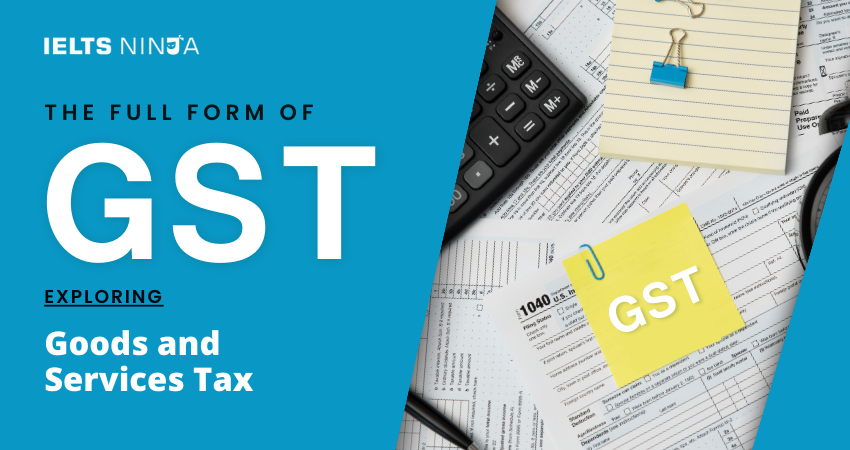In the realm of taxation and fiscal policy, “GST” is an essential abbreviation that represents one of the most significant reforms in the world of taxation. The full form of GST, which stands for Goods and Services Tax, is a value-added tax levied on the consumption of goods and services. It is designed to simplify the tax structure, promote transparency, and enhance the ease of doing business. In this comprehensive guide, we will explore the details of GST, its significance, and how it functions.
What is GST?
Goods and Services Tax (GST) is a consumption-based tax system that replaces multiple indirect taxes levied by the government. It is a comprehensive tax that encompasses the taxation of both goods and services, aiming to create a unified tax structure. GST is collected at each stage of the supply chain, from the manufacturer to the consumer, with the tax burden ultimately borne by the end consumer.
Key Aspects of GST
GST involves several key aspects and features:
Dual GST Structure:
Many countries, including India, follow a dual GST structure, which comprises a Central GST (CGST) levied by the central government and a State GST (SGST) levied by the respective state governments.
Input Tax Credit:
Under GST, businesses can claim a credit for the GST paid on inputs (goods and services) against the GST liability on their output. This reduces the cascading effect of taxes.
Threshold Exemptions:
GST often includes a threshold limit below which small businesses are exempt from the tax, known as the Composition Scheme. This simplifies compliance for smaller enterprises.
Multiple Tax Rates:
GST may have multiple tax rates for different categories of goods and services. These rates can vary, typically including a standard rate and lower rates for essential goods and services.
Electronic Filing:
GST compliance usually involves electronic filing of returns and payments, promoting transparency and reducing paperwork.
Also Read: Best online IELTS coaching & training academy
Significance of GST
Goods and Services Tax (GST) holds immense significance for several reasons:
Simplified Taxation:
GST simplifies the taxation system by replacing a myriad of indirect taxes with a single, unified tax structure.
Input Tax Credit:
The input tax credit mechanism reduces the tax burden on businesses and prevents the double taxation of goods and services at different stages of the supply chain.
Reduced Tax Evasion:
GST’s transparent and electronic filing system makes it more challenging for businesses to evade taxes, thereby increasing tax compliance.
Boost to the Economy:
GST promotes economic growth by making it easier to do business, fostering interstate commerce, and reducing trade barriers.
Global Competitiveness:
With a GST system in place, countries become more competitive in the global market, attracting investment and trade.
Consumer Benefits:
GST is expected to lead to lower prices for goods and services in the long run, benefiting consumers.
Challenges and Implementation
The implementation of GST can be challenging, as it requires coordination between central and state governments, the adoption of new technology, and educating businesses and consumers about the new tax system. Additionally, determining tax rates for various goods and services can be a complex task.
Conclusion
Goods and Services Tax (GST) represents a transformative shift in taxation, simplifying the tax structure, promoting transparency, and fostering economic growth. It is a critical tool for governments to mobilize revenue, improve tax compliance, and create a conducive environment for businesses.
As countries continue to embrace GST and refine their tax systems, it remains a cornerstone of modern taxation, driving economic progress and enhancing the ease of doing business on a global scale.








